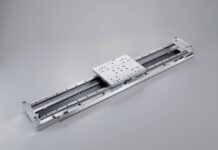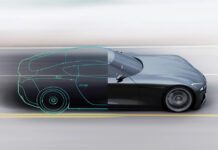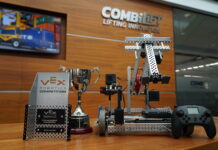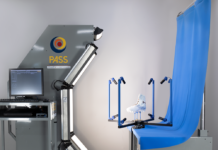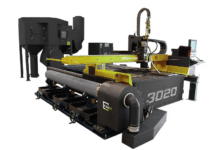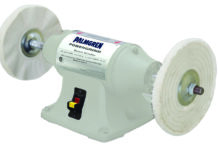 How this process has advanced over the years
How this process has advanced over the years
By: Jim Colt, Hypertherm
High definition plasma cutting has been available for almost 20 years. Its original development relied on new technology that could improve conventional plasma cut quality regarding edge squareness (especially on thinner materials) and cut part accuracy while maintaining respectable consumable life and operating cost.
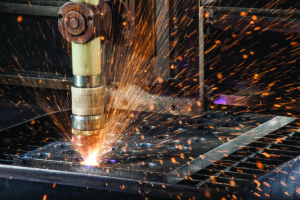 The earliest systems were limited to 30 amps of output power and ¼” cut thickness, these systems could produce cut quality on thinner materials that were far better than previously seen with plasma. The OEM builders of CNC cutting machines that utilized plasma had to go back to their engineering teams for further development, as the plasma cutter’s accuracy had finally exceeded the motion control capabilities of existing machine designs. Better mechanical components (linear bearings), drive motors (AC brushless servos), software and height control systems had to be developed to maximize the capability of these new technology plasma systems in the mid-1990s.
The earliest systems were limited to 30 amps of output power and ¼” cut thickness, these systems could produce cut quality on thinner materials that were far better than previously seen with plasma. The OEM builders of CNC cutting machines that utilized plasma had to go back to their engineering teams for further development, as the plasma cutter’s accuracy had finally exceeded the motion control capabilities of existing machine designs. Better mechanical components (linear bearings), drive motors (AC brushless servos), software and height control systems had to be developed to maximize the capability of these new technology plasma systems in the mid-1990s.
Further development brought higher power levels with this technology; first to 70 amps (3/8”, 10mm) and then to 100 amps. Today, you can have high definition plasma systems that can cut with oxygen on mild steel at 400 amps (3”, 75mm) and on stainless and aluminum to more than 6” (150mm) at 800 amps. High definition plasma has essentially replaced conventional plasma cutting in the majority of plate cutting applications worldwide and for good reason. These systems have a lower cost per cut, higher cut part accuracy, higher productivity and greater ease of use. Let’s take a look at the technology, as well as the most recent technical advancements that this technology brings to the shop floor.
What Exactly is High Definition Plasma?
Plasma process engineers at the major plasma manufacturing companies were well aware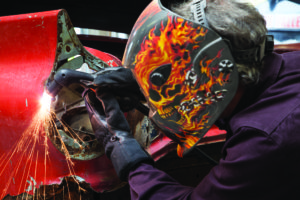 of the balancing act regarding cut quality and consumable life when new plasma torches and consumables were being developed. Typically when developing new torches these engineers knew that you could constrict a high-temperature plasma jet to a certain energy density level by forcing the correct mixture of gas (often pure oxygen) and electrical energy through a nozzle orifice.
of the balancing act regarding cut quality and consumable life when new plasma torches and consumables were being developed. Typically when developing new torches these engineers knew that you could constrict a high-temperature plasma jet to a certain energy density level by forcing the correct mixture of gas (often pure oxygen) and electrical energy through a nozzle orifice.
The orifice would shape the arc into a perfectly cylindrical shape with high velocity and density in the range of 12,000 amps per square inch. It was known that exceeding that threshold of energy density would create better cut quality in terms of edge squareness, but the sacrifice would be a rather severe drop off of electrode and nozzle (consumable) life. Cut quality would improve, but operating cost and downtime from changing consumables would increase.
In the early 1990’s a couple of developments that improved the life of consumables were discovered at Hypertherm’s Hanover, NH labs. These developments called “Long-Life” technology and “Shield” technology used a microprocessor controlled power supply and gas flow control technology as well as an electrically isolated nozzle shield to dramatically increase torch electrode and nozzle life in conventional plasma cutting systems. Both of these inventions increased the interest of plate cutting shops by lowering the cost of plasma cutting without losing any of the high productivity (cut speeds) that made the plasma cutting process desirable.
Engineering quickly went back to the research labs and looked again at increasing the energy density of the plasma cutting arc beyond the standard threshold and discovered that with the new shield and longer consumable life technologies it was possible to increase energy density. Further development provided a new vented nozzle design that allowed the energy density to increase as much as 4x, or 60,000 amps per square inch, and with consumable parts life remaining in the acceptable range.
This new technology introduced in the mid-1990s called high definition was at first limited to a maximum current output of 30 amps but was increased over the years to cover the full range of metal fabricating needs.
Excellent Cut Quality, but Finicky Process
Early high definition systems were typically used on materials from gauge to about ¾ inch thickness. The best processes were primarily for mild steel cutting, although there were specialty gas mixes used to improve quality on stainless and aluminum. While these systems were capable of producing excellent cut quality, it was quickly learned that the machine operator had to pay extra attention as all of the settings for gas pressures, cut speeds, torch height and amperage had to be accurately set and maintained.
The operator had to learn to read the cut face and determine if any adjustments to the parameters were necessary based on the chemical or metallurgical content of the material being cut. While many users were extremely satisfied with the performance of these early high definition systems, others were asking for higher levels of automation to essential take some of the expertise out of the operator’s hand and make the cutting process more forgiving.
Higher Levels of Embedded Automation
Second generation high definition systems brought power levels up to 200 amps, ample power for cutting with high definition quality to about 1” on steel and ¾” on nonferrous materials. More importantly, serial communication links between the CNC machine and the plasma system allowed for automatic selection of many of the settings typically needing adjustment by the machine operators.
Now the gas flow settings for pre-flow and cut flow gases could be automated based on the material type and thickness, and depending on the CNC’s capability many other process settings could be automated as well. More expertise was embedded into the machine so the operator could pay attention to loading and unloading the plate and the finished parts. More productivity and less chance of setup errors were the direct result, but users still wanted more power and even higher levels of automation from the high definition process.
Real-Time Communication
The standard for high definition plasma cutting today allows for the end user to choose power levels with four different maximum outputs between 130 and 800 amps, all of which will cut gauge materials the same, but allow for different maximum capabilities depending on the user needs. Engineers realized the importance of coordinating the timing of the plasma system, the height control, the gas flow control, and the CNC as well as the CAM software, and linked all of these components through a real time digital interface.
This type of intimate communication was developed so that as new capabilities were developed – they could be added to an existing platform relatively quickly to continuously improve the performance of the cutting system. The current generation of high-definition systems have been in the field for more than ten years now and are clearly the most popular method of cutting plate at high speeds with excellent tolerances at the lowest cost per foot of any contour cutting process.
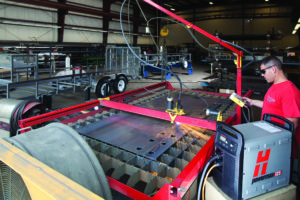 Consumable life has continued to improve, cut quality has improved, but perhaps the most important advantage with today’s integrated high definition class plasma cutting systems is their ease of use from the programmer and CNC machine operator perspective. Today’s high definition system operator does not need to be an expert. If you can operate a windows based computer to do day to day tasks such as checking email and paying bills online, then you can operate today’s high definition plasma cutting systems.
Consumable life has continued to improve, cut quality has improved, but perhaps the most important advantage with today’s integrated high definition class plasma cutting systems is their ease of use from the programmer and CNC machine operator perspective. Today’s high definition system operator does not need to be an expert. If you can operate a windows based computer to do day to day tasks such as checking email and paying bills online, then you can operate today’s high definition plasma cutting systems.
Hole Cutting Technology
Even with early high definition systems, it was likely (without an advanced machine operator) that holes under about 1-1/4” diameter would need secondary work. There typically would be anomalies at the lead in and lead out areas that would make the holes not perfectly round. There was always a bit of taper in holes, with the bottom always smaller than the top. There often was a serious out of round bottom shape that would require re-drilling or reaming in order to get the holes to specifications.
Hypertherm decided to invest in a project to automate the programming of holes with the goal of eliminating the secondary operations often necessary to bring holes back to necessary tolerances. A project team spent close to three years in laboratories cutting a range of hole diameters in a wide range of thicknesses on a steel plate. Each hole was then measured carefully on a coordinate measuring machine to determine the tolerance issues, and steps were then implemented to determine the best practices for improving the quality of holes.
While time-consuming, much progress was made in the first year or so resolving the anomalies associated with lead ins and lead outs, however the natural taper in a plasma cut hole was simply not solvable using advanced motion control and timing techniques. Ultimately the team discovered a plasma gas process change that was able to be automatically (no operator or programmer intervention) implemented for each hole diameter and material thickness between 10-gauge steel and 1” steel.
This patented process then was integrated into a large database in the CAM software package. Today it is automatically implemented on part drawings (.dxf files or other CAD output files) to ensure consistency and accuracy in hole quality. This process was easily adapted to existing high definition plasma systems based on their ability to intimately communicate with all of the key system components.
Improving Cycle to Cut Times
Everyone that has watched automated plasma systems over the years has seen the typical plasma torch cut one hole, retract, move to the next cut part, index down to the plate, retract to pierce height, cut the part, then continue to repeat until the full sheet of parts is cut. Automation engineers could clearly see the wasted time during the period when the torch retracted, traversed to the next cut and then repeated the process with each cut cycle. These same engineers started a project that could more rapidly go through the cut cycles.
To minimize and eliminate some of these time-consuming moves, the entire system would have to communicate with the CAM nesting software to ensure that retracts could be ignored to save time and that gas pre-flows were started in advance for faster torch firing. The direct result was collision avoidance software and rapid part cutting software that could automatically change part location, lead in/out locations to avoid plate collisions, and allow the torch to not retract between cuts.
Higher productivity and dramatically faster cut to cut cycles are now the norms with these advanced additions to high definition plasma technology. Fortunately, the architecture of integrated plasma systems allows this type of technology to be easily integrated with most systems.
Beveling Technology Improvements
Plasma plate beveling, which is often used for weld prep bevels, has been available for more than 25 years on CNC plasma machines. Early machines were quite costly and required a high level of expertise from the programmer as well as the machine operator. A bevel program was typically loaded on the CNC control, and a few test cuts were made and dimensions checked. In most cases it took three or more attempts to get the cut part within specifications.
This was not only time consuming but required the operator and programmer to work as a well-coordinated team. Further complications would arise after a certain amount of cutting, caused by the natural wear on the torch electrode which would cause a height (torch to work distance) change, which during beveling would change the tolerances of the part often putting it back out of tolerance.
Recent advancements in CAM software and CNC technology, as well as the existing ability for these systems to intimately communicate with the height control and the high definition plasma, have simplified and automated the process of plate beveling. Today the programmer programs the angles and land sizes desired for weld prep bevels and sends the program to the machine operator.
Typically, the first part off the machine is within specification, so the normal trial and error is eliminated. Further, since the newest technology height control systems have the ability to automatically sample arc voltage before each cut cycle (effectively recalibrating the voltage/height relationship to compensate for consumable wear) the issue with dimensional changes caused by consumable wear is all but eliminated.
High definition plasma is here to stay as the world’s most productive plate cutting process. Today the systems are easier to learn and use than ever before. The architecture of the best high definition systems allows for upgraded technology when the technology becomes available. If you have not looked at your plate cutting processes on your shop floor and compared them with the productivity, accuracy and operating cost advantages of the latest high definition systems today, perhaps it is time.
For more information, visit www.hypertherm.com

